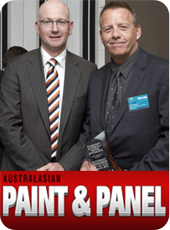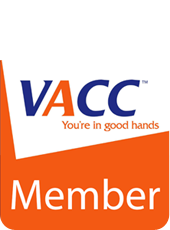The Repair Process
Panel Beating is a term used by the public to describe the entire repair process but for the trade it describes only part of the process. The parts it describes is the Repair Process that involves, straightening chassis rails and frames, removing and re-welding panels, fixing dents, confirming correct fit & function and other repair based work that is completed prior to paint refinishing. The panel beaters are responsible for ensuring that the shape, fit, function and specifications match that of a vehicle fresh off the factory assembly line.
Step 1 - Determine the damage
This part of the process is usually done at the time of estimating. The Panel Beaters and Estimators will work together to determine the extent of the damage and the appropriate method of repair. The estimating process determines what method of repair the panel beaters are performing. We have open information lines available from the manufacturers, industry bodies and training organisations to keep ahead of the ever changing rules and regulations and make sure every repair follows current procedures.
Step 2 - Preparing for repairs
They will start off by finishing the stripping of components and parts from the vehicle and storing the parts safely in our electronically logged parts storage room. Any new panels are collected from the incoming parts area and logged with the other components. With the damage area completely stripped they will further analyse the damage and decide where they are best to start the repair. If required the vehicle will be moved to one of our Car-O-Liner measure and aligning benches and prepared for alignment
Step 3 - Aligning the Body and Chassis
With larger heavier damage it is most likely that the body or chassis of the vehicle will no longer be within specification. Our panel beaters use Car-O-Liner Quick 42 Benches with computerised measuring to professionally measure and realign the body and chassis of the vehicle. With an accuracy of less than a millimeter you can rest assured your vehicle will be back to OEM specification. Once alignment is within specification and damaged panels will be replaced or repaired depending on the severity and complexity of damage.
Step 5 - Replacing Panels
In the event that repair requires replacement panels they will be either welded/bonded or bolted. The welded/bonded replacement process is much more complicated than replacing panels that are bolted to the body. Bolted panel can be unbolted and a new panel bolted in place ensuring correct fit, gaps and function. Welded/Bonded panels require the old welds or bonding to be removed so the panel can be cut/removed from the vehicle. Once the panel beaters have removed the old welded/bonded panel they will trial fit the part to specification and prepare the joining surfaces for the welding/bonding of the new panel/s. Using Automatically calibrating Inverter spot welders the new panel will be professionally welded in place in the same manner as on the assembly line. Bonded replacement methods follow much of the welded panels process except an OEM specific bonding agent is used instead of welding. Many new cars are using bonded repair methods in their OEM recommended repair procedures as the safest method of repairing the vehicle.
Step 5 - Repairing Panels
Repairing Panels involves using panel beating techniques that don't involve replacing the panel. With a hammer and dolly our skilled panel beaters will finesse the dents back to factory shape. This process takes considerable skill and time to ensure the results are perfect and free from imperfections. Certain metals require special attention and new high strength steels have rules and regulations covering how they can be repaired. The panel beaters take this into account and carefully reshape and align the panel being repaired. Once they are happy with the resulting surface they will apply a fine filler if the surface requires any further finessing. The fine filler is sanded back bringing the surface to a more detailed and smoother finish. Larger body components like floors are chassis rails will have any OEM finishes applied like body sound deadening matting and anit-chip coatings
Finalising the repair
Once the panel beaters have fixed the damage to the vehicle according to job instruction sheet they will complete any further dis-assembly required, collect all parts that require paint refinishing and move the vehicle to the Paint Department.























